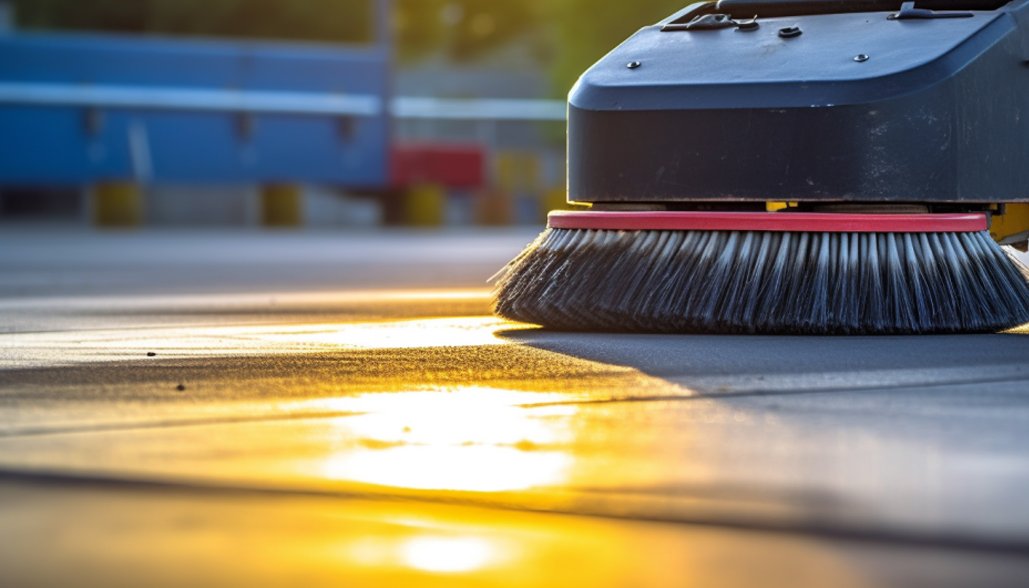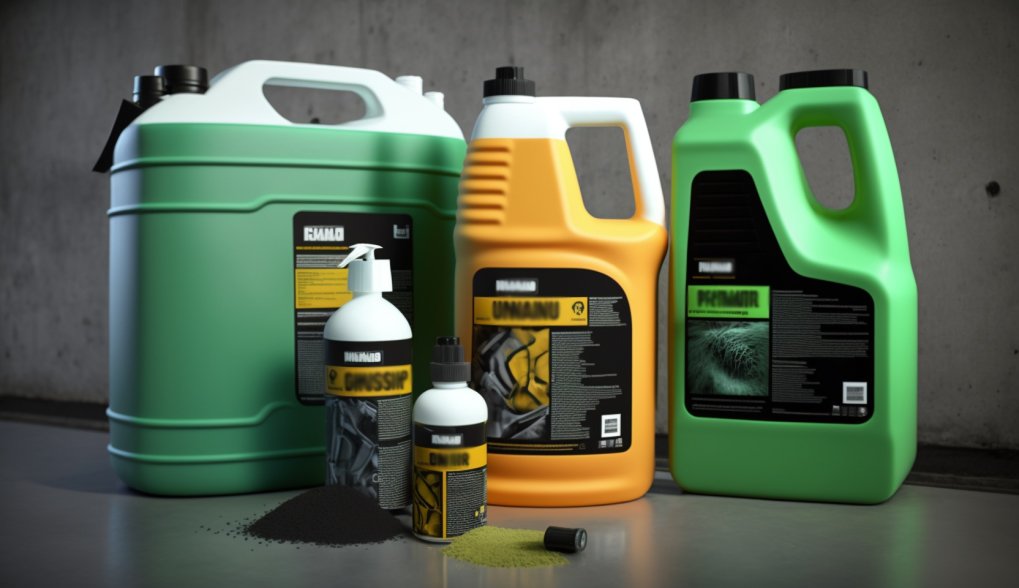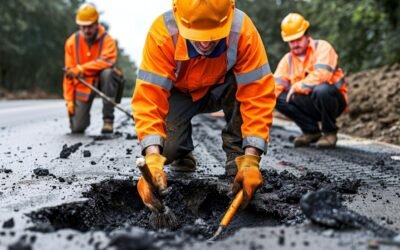A well-maintained parking lot not only boosts curb appeal but also ensures the safety and satisfaction of customers and visitors. In Canada, parking lot cleaning can be particularly challenging due to harsh weather conditions and various types of surfaces. This article covers five effective techniques for maintaining pristine parking lots, addressing the unique challenges faced by property owners and managers in Canada. Keep reading to discover the best practices for sweeping, pressure washing, scrubbing, spot cleaning, and seasonal maintenance, as well as tips for waste disposal, budgeting, and safety. By the end of this article, you’ll have a comprehensive understanding of how to achieve and maintain a spotless parking lot that welcomes and impresses visitors.
Table of Contents
Introduction
The importance of a well-maintained parking lot cannot be overstated. A clean and safe parking area reflects positively on your business or property, making a lasting impression on visitors. Furthermore, proper cleaning and maintenance practices can extend the life of your parking lot surface, saving you money on repairs and replacement. In this section, we’ll explore the importance of a well-maintained parking lot, the challenges of cleaning, and the goals of effective cleaning techniques.
Importance of a well-maintained parking lot
A clean and well-kept parking lot offers numerous benefits, such as:
- Enhancing curb appeal: A visually appealing parking lot helps create a positive first impression, which can boost the reputation of your business or property.
- Ensuring safety: Regular cleaning prevents the buildup of debris and hazards, reducing the risk of accidents and injuries.
- Extending the life of the parking lot: Proper maintenance can help prevent damage to the surface, thereby extending its lifespan and saving on repair costs. A well-maintained parking lot can last from 15 – 35 years.
Challenges in parking lot cleaning
Property owners and managers in Canada face unique challenges when it comes to maintaining parking lots, including:
- Weather conditions: Canadian winters can be harsh, with heavy snowfall and freezing temperatures that make cleaning and maintenance difficult.
- Environmental impact: Cleaning techniques can consume large amounts of water and generate waste, so it’s essential to consider the environmental impact of your maintenance practices.
- Budget constraints: Balancing the cost of cleaning equipment and services with the need for a well-maintained parking lot can be challenging.
Goals of effective parking lot cleaning
To overcome these challenges and achieve a spotless parking lot, it’s essential to focus on the following goals:
- Efficiency: Adopt effective cleaning techniques that minimize the time and resources required to maintain a clean parking lot.
- Safety: Prioritize safety by regularly inspecting and addressing potential hazards in your parking area.
- Environmental impact: Choose eco-friendly cleaning products and methods that reduce water consumption and waste generation.
Key takeaways:
- A well-maintained parking lot is crucial for creating a positive first impression and ensuring visitor safety.
- Unique challenges in Canada, such as harsh weather and environmental concerns, require a tailored approach to parking lot cleaning.
- Focus on efficiency, safety, and environmental impact to achieve the best results.
Understanding Different Types of Parking Lot Surfaces
Before diving into cleaning techniques, it’s essential to understand the different types of parking lot surfaces commonly found in Canada. The most prevalent materials used for parking lots are asphalt, concrete, and paver stones. Each material has its unique characteristics and cleaning requirements, so it’s crucial to tailor your cleaning approach accordingly.
Asphalt
Asphalt is a popular choice for parking lots in Canada because it’s cost-effective, durable, and flexible. Asphalt surfaces can withstand
freezing and thawing cycles, making them well-suited for the Canadian climate. However, asphalt is susceptible to damage from oil, gasoline, and other chemicals, which can lead to staining and deterioration. Regular cleaning is essential to prevent these issues and prolong the life of the asphalt surface.
Concrete
Concrete is another common material for parking lots in Canada. It’s strong, durable, and requires less maintenance than asphalt. However, concrete can still be prone to staining from oil, grease, and other substances. Additionally, the freeze-thaw cycles in Canada can cause concrete to crack and deteriorate over time. To maintain a pristine concrete parking lot, regular cleaning and sealing are necessary.
Paver stones
Paver stones are a visually appealing option for parking lots, as they come in various shapes, sizes, and colors. They’re also durable and can be easily replaced if damaged. However, paver stones require regular maintenance to prevent weed growth and shifting, which can create an uneven surface. Cleaning and sealing paver stones can help maintain their appearance and stability.
Key takeaways:
- Asphalt, concrete, and paver stones are the most common types of parking lot surfaces in Canada.
- Each material has unique characteristics and cleaning requirements, so it’s crucial to tailor your cleaning approach accordingly.
- Regular cleaning and maintenance can help prolong the life of your parking lot surface and maintain its appearance.
Technique 1: Sweeping and Vacuuming
Sweeping and vacuuming are essential techniques for keeping your parking lot free of dirt, debris, and trash. There are several methods for sweeping, including manual, mechanical, and vacuum sweeping. Each method has its benefits and drawbacks, so it’s important to choose the right approach for your parking lot’s needs.
Manual sweeping
Manual sweeping involves using brooms and dustpans to clean the parking lot by hand. This method is cost-effective and suitable for smaller areas. However, manual sweeping can be labor-intensive and time-consuming, making it less practical for larger parking lots.
Mechanical sweeping
Mechanical sweeping uses specialized equipment, such as street sweepers or ride-on sweepers, to clean the parking lot more efficiently than manual sweeping. Mechanical sweepers are suitable for larger parking lots and can effectively remove dirt, debris, and trash. However, they can be more expensive than manual sweeping methods and may require specialized training to operate.
Vacuum sweeping
Vacuum sweeping is a type of mechanical sweeping that uses powerful vacuums to remove dirt and debris from the parking lot surface. This method is highly effective at collecting fine dust and particles that other sweeping methods might miss. Vacuum sweepers can be more expensive than other types of sweepers, but they provide a thorough cleaning that can improve the appearance and longevity of your parking lot.
Key takeaways:
- Sweeping and vacuuming are essential for maintaining a clean and debris-free parking lot.
- Manual, mechanical, and vacuum sweeping methods are available to suit different parking lot sizes and cleaning needs.
- Choose the right sweeping method based on your budget, parking lot size, and desired level of cleanliness.
Technique 2: Pressure Washing
Pressure washing is a powerful cleaning technique that uses high-pressure water spray to remove dirt, grime, and stains from surfaces. This method is particularly effective for cleaning parking lots, as it can quickly and efficiently eliminate built-up debris, grease, and oil stains. In this section, we’ll cover the basics of pressure washing, its benefits, and environmental considerations.
Pressure washing basics
Pressure washing equipment consists of a high-pressure pump, a hose, and a spray gun with various nozzle attachments. The pressure washer pump generates a powerful water stream, which is directed onto the surface to be cleaned through the spray gun. By selecting the appropriate nozzle, you can control the water pressure, spray pattern, and cleaning intensity.
Pressure washing can be done using cold or hot water, depending on the type of debris and stains being removed. Hot water pressure washing is more effective at dissolving grease and oil stains, while cold water is suitable for general cleaning tasks.
Benefits of pressure washing
Some of the key advantages of pressure washing for parking lot cleaning include:
- Fast and efficient cleaning: Pressure washing can cover large areas quickly, making it an ideal solution for parking lot maintenance.
- Effective stain removal: The high-pressure water spray can remove even the most stubborn stains, such as oil, grease, and tire marks.
- Reduced need for chemicals: Pressure washing often eliminates the need for harsh cleaning chemicals, as the high-pressure water is sufficient to remove dirt and stains.
Environmental considerations
Although pressure washing is an effective cleaning technique, it’s essential to consider its environmental impact. High water consumption and runoff containing pollutants can harm the environment. To minimize the environmental impact of pressure washing, consider the following:
- Use eco-friendly cleaning agents: Choose biodegradable and environmentally friendly cleaning products when necessary.
- Recycle water: Invest in a water recovery system that collects and filters used water for reuse.
- Proper waste disposal: Dispose of wastewater according to local regulations to prevent pollution.
Key takeaways:
- Pressure washing is a powerful cleaning technique for maintaining parking lots, offering fast and efficient cleaning and effective stain removal.
- Environmental considerations include using eco-friendly cleaning agents, recycling water, and proper waste disposal.
- Always follow local regulations and guidelines to minimize the environmental impact of pressure washing.
Technique 3: Scrubbing
Scrubbing is another effective cleaning technique for parking lots, particularly for removing stubborn dirt, grime, and stains. Scrubbing machines use rotating brushes and cleaning solutions to clean surfaces, making them ideal for tackling heavily soiled areas. In this section, we’ll discuss the types of scrubbing machines, when to use scrubbing, and how to choose the right scrubber for your parking lot.
Types of scrubbing machines
There are two main types of scrubbing machines: walk-behind scrubbers and ride-on scrubbers. Both types use rotating brushes and cleaning solutions to clean surfaces. Walk-behind scrubbers are smaller, more affordable, and suitable for tight spaces. Ride-on scrubbers are larger, more powerful, and ideal for cleaning expansive parking lots more efficiently.
When to use scrubbing
Scrubbing is most effective for removing heavy dirt, grime, and stains that cannot be eliminated with sweeping or pressure washing alone. Some situations where scrubbing is particularly useful include:
- After construction or renovation projects: Scrubbing can remove dirt, dust, and debris left behind by construction work.
- For heavily soiled areas: Scrubbing can tackle stubborn stains and accumulated grime, restoring the appearance of your parking lot.
- In combination with other cleaning techniques: Scrubbing can be used alongside sweeping or pressure washing to achieve a thorough
Choosing the right scrubber
Selecting the right scrubber for your parking lot cleaning needs depends on several factors, including the size of your parking lot, the types of stains you’re dealing with, and your budget. Consider the following when choosing a scrubber:
- Size of the parking lot: Larger parking lots may require ride-on scrubbers for efficient cleaning, while smaller lots or tight spaces may be better suited for walk-behind scrubbers.
- Cleaning requirements: Evaluate the types of stains and the level of dirt in your parking lot to determine the scrubber’s necessary cleaning power and features.
- Budget: Scrubbing machines vary in price, so consider your budget when selecting the right equipment.
Technique 4: Spot Cleaning and Stain Removal
Spot cleaning and stain removal are essential aspects of maintaining a clean and attractive parking lot. In this section, we will discuss how to identify common parking lot stains, choose the right cleaning solutions, and employ effective stain removal techniques.
Identifying common parking lot stains
Some typical parking lot stains include:
- Oil and grease stains: These stains result from vehicle leaks and can cause slippery surfaces and environmental concerns.
- Tire marks: Tire scuffs and skid marks can detract from the appearance of your parking lot.
- Paint and graffiti: Vandalism can damage your parking lot’s aesthetic appeal and may require specialized removal techniques.
Choosing the right cleaning solutions
Selecting the right cleaning solution for your parking lot stain depends on the type of stain and its severity. Some options include:
- Degreasers: These cleaning agents are designed to break down and dissolve grease and oil stains.
- Graffiti removers: Specialized cleaning solutions are available to remove paint and graffiti from surfaces.
- General-purpose cleaners: These cleaning products are suitable for removing light dirt and grime from parking lot surfaces.
Always opt for eco-friendly cleaning solutions that are biodegradable and safe for the environment.
| Stain Type | Cleaning Solution | Stain Removal Technique |
| Oil and grease | Universal degreaser | Apply the degreaser to the stain and let it sit for 5-10 minutes. Scrub with a stiff brush and rinse with water. |
| Tire marks | Power washing | Use a power washer to remove tire scuffs and skid marks. |
| Paint and graffiti | Paint thinner | Apply paint thinner to the stain and let it sit for 5-10 minutes. Scrub with a stiff brush and rinse with water. |
Stain removal techniques
Different stains require different removal techniques. Some effective stain removal methods include:
- Pressure washing: As mentioned earlier, pressure washing can be highly effective for removing various parking lot stains, including oil, grease, and tire marks.
- Scrubbing: Using a scrubbing machine can help remove stubborn dirt and stains from your parking lot surface.
- Chemical treatment: Applying a cleaning solution directly to the stain and allowing it to sit for a short period can help break down the stain before washing it away.
Key takeaways:
- Spot cleaning and stain removal are crucial for maintaining a clean and attractive parking lot.
- Identify common stains and choose appropriate cleaning solutions for effective removal.
- Employ a combination of pressure washing, scrubbing, and chemical treatments to tackle various stains.
Technique 5: Seasonal Maintenance
Seasonal maintenance is essential for keeping your parking lot clean and safe throughout the year. In this section, we’ll cover preparing for winter, snow removal, and spring cleaning tips for your parking lot.
Preparing for winter
Winter weather can wreak havoc on your parking lot, leading to snow and ice accumulation, potholes, and salt damage. To prepare your parking lot for winter, consider the following:
- Repair cracks and potholes: Address any existing damage to your parking lot surface to prevent further deterioration caused by freezing and thawing.
- Apply a sealant: Seal your parking lot surface to protect it from snow, ice, and salt damage.
- Clear storm drains: Ensure that storm drains are free of debris to prevent flooding and ice buildup.
Snow removal
Proper snow removal is vital for maintaining a safe and accessible parking lot during the winter months. Some snow removal tips
Spring cleaning tips
As winter comes to an end, it’s essential to conduct thorough spring cleaning to address any damage caused by the cold weather and ensure your parking lot is clean and safe. Some spring cleaning tips include:
- Inspect for damage: Check your parking lot for any cracks, potholes, or other damage caused by freezing and thawing, and schedule necessary repairs.
- Remove leftover sand and salt: Sweep and pressure wash your parking lot to remove any remaining sand, salt, and debris from winter maintenance.
- Clean storm drains: Clear out any debris from storm drains to prevent flooding and ensure proper drainage during spring rains.
- Refresh parking lot lines: Repaint faded parking lot lines and markings to improve visibility and maintain an organized parking area.
Key takeaways:
- Spring cleaning is essential for addressing winter damage and maintaining a clean and safe parking lot.
- Inspect your parking lot for damage, remove leftover sand and salt, and clean storm drains.
- Refresh parking lot lines and markings for improved visibility and organization.
Keep Your Parking Lot Pristine and Inviting
A clean and well-maintained parking lot is crucial for creating a positive first impression for your visitors and ensuring their safety. In this section, we’ll summarize the effective techniques discussed throughout this article, emphasize the benefits of a clean parking lot, and encourage ongoing maintenance.
Summary of effective techniques
To keep your parking lot pristine and inviting, employ the following techniques:
- Regular sweeping
- Pressure washing
- Scrubbing
- Spot cleaning and stain removal
- Seasonal maintenance, including winter preparation and spring cleaning
Emphasizing the benefits of a clean parking lot
A clean parking lot offers several benefits, including:
- Improved safety: Regular cleaning reduces the risk of accidents caused by slippery surfaces, debris, or poor visibility.
- Enhanced curb appeal: A well-maintained parking lot creates a positive first impression for visitors and reflects well on your business or property.
- Increased longevity: Regular maintenance helps prevent damage to your parking lot surface and can save you money on costly repairs in the long run.
Encouraging ongoing maintenance
To maintain a clean and inviting parking lot, establish a regular cleaning and maintenance schedule that includes sweeping, pressure washing, scrubbing, and seasonal tasks. Monitor your parking lot for any new stains or damage and address them promptly to keep your property in top condition.
Frequently Asked Questions
How often should I clean my parking lot?
The frequency of parking lot cleaning depends on factors such as the size of your parking lot, the amount of traffic it receives, and local weather conditions. In general, you should sweep your parking lot at least once a week and perform more thorough cleaning, such as pressure washing or scrubbing, on a monthly or quarterly basis.
What is the best cleaning technique for removing oil stains?
For removing oil stains, a combination of pressure washing and applying a degreaser is typically the most effective method. The degreaser helps break down the oil, while the pressure washing removes the stain and any remaining residue.
Can I use household cleaning products for parking lot cleaning?
Household cleaning products may not be suitable for parking lot cleaning, as they may not be strong enough to remove heavy stains or grime. Instead, opt for commercial-grade, eco-friendly cleaning solutions specifically designed for parking lot maintenance.
How do I choose the right cleaning equipment for my parking lot?
When choosing cleaning equipment for your parking lot, consider the size of your parking lot, the types of stains and dirt you need to address, and your budget. Larger parking lots may require ride-on equipment for efficient cleaning, while smaller lots or tight spaces may
Sources
- “MYpavementGUY.com.” Mypavementguy.com, 2019, mypavementguy.com/blog/asphalt-maintenance/life-cycle-average-asphalt-parking-lot/. Accessed 5 May 2023.
- “Bortek Industries, Inc.” Bortek Industries, Inc.®, 21 Apr. 2023, www.sweeperland.com/parking-lot-garage-sweeping-machines/. Accessed 5 May 2023.
- Perrenoud, Matt. “Is Pressure Washing Environmentally Risky? – Majestic Window Cleaning & Pressure Washing.” Majestic Window Cleaning & Pressure Washing, 10 Sept. 2022, majesticwindowsexteriorcleaning.com/is-pressure-washing-environmentally-risky/. Accessed 5 May 2023.
- Wikipedia Contributors. “Floor Scrubber.” Wikipedia, Wikimedia Foundation, 12 July 2021, en.wikipedia.org/wiki/Floor_scrubber. Accessed 5 May 2023.










